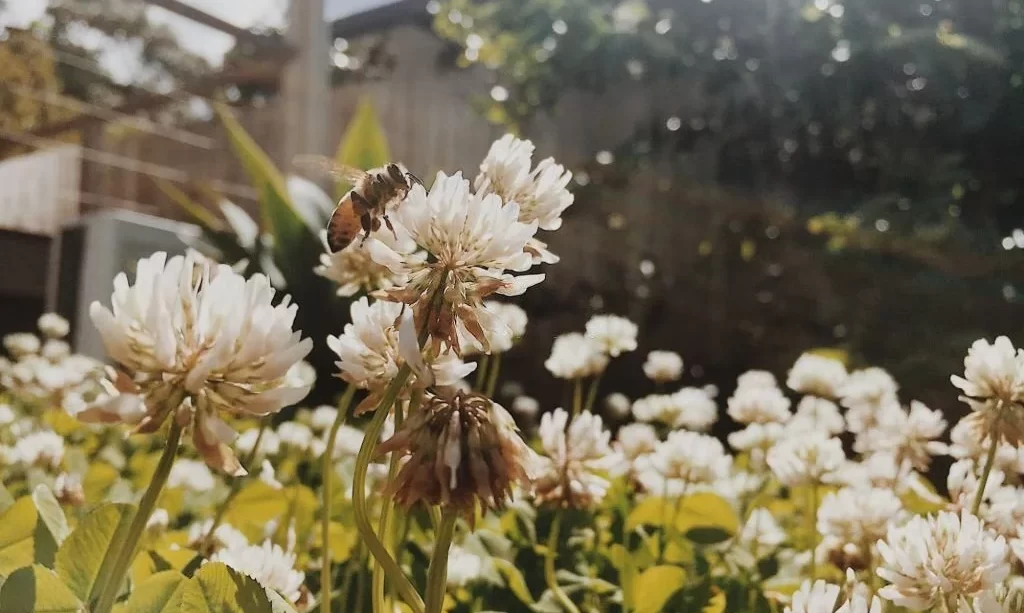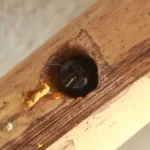Diatomaceous earth (DE) stands as a versatile and naturally occurring substance celebrated for its utility in the realms of gardening and pest control. This fine powder, derived from the fossilized remains of diatoms, microscopic algae that once inhabited Earth’s ancient oceans, has found its way into the toolkit of gardeners and homeowners seeking effective and environmentally friendly solutions to combat pests. However, beneath the promise of DE’s efficacy lies a question of ecological importance: does diatomaceous earth harm bees, those essential pollinators upon which our food supply depends?
- 10 Lbs de – meets U.S. Food chemicals codex standards
Diatomaceous Earth
Before delving into the potential impact of diatomaceous earth on bees, it is essential to establish a fundamental understanding of this remarkable substance:
Diatomaceous earth, often abbreviated as DE, is a naturally occurring sedimentary rock formed from the fossilized exoskeletons of diatoms. These diatoms, tiny aquatic organisms, played a crucial role in Earth’s prehistoric oceans. Over millennia, their remains accumulated on the ocean floor, forming the silica-rich deposits that are mined and processed into the powdery substance known as diatomaceous earth.
DE is celebrated for its unique mode of action as an insecticide. Rather than relying on chemical toxins, it acts through physical means. DE is composed of microscopic, razor-sharp particles that, when in contact with insects, inflict cuts and abrasions on their exoskeletons. Additionally, DE absorbs lipids from the outer layer of insects, effectively dehydrating and desiccating them. This dual action makes DE a formidable adversary against a wide array of crawling pests, including ants, cockroaches, and garden nuisances like slugs and snails.
What distinguishes diatomaceous earth as an environmentally friendly pest control option is its non-toxic nature. Unlike chemical pesticides, DE poses no risk of contaminating soil, water, or harming non-target organisms when used correctly. It’s considered safe for humans and pets, making it an attractive choice for those seeking alternatives to chemical solutions.
With this foundational understanding of diatomaceous earth, we embark on a journey to explore its interaction with one of nature’s most vital contributors: bees. The question at the heart of this exploration is whether DE, while effective against pests, inadvertently harms these essential pollinators that play a pivotal role in our ecosystems and agriculture.
DE and Bees: Potential Concerns
As the use of diatomaceous earth in gardens and homes has gained popularity for its effectiveness against pests, concerns have arisen about its potential impact on bees, those diligent pollinators that are integral to our ecosystems and agricultural productivity. These concerns stem from the fact that while DE is celebrated for its safety for humans and pets, its mode of action, which relies on physical abrasion and desiccation, could potentially affect bees as well.
Bees, particularly honeybees and native pollinators, are critical contributors to global food production. They facilitate the pollination of countless crops, from fruits and vegetables to nuts and oilseeds. Without the diligent work of bees, many of the foods we rely on would become scarcer and more expensive.
Given the essential role of bees, any substance used in gardens or agricultural settings warrants scrutiny for its impact on these beneficial insects. While DE is generally considered safe for mammals, its use around areas frequented by bees raises valid concerns about the potential for contact and the consequences it might have on these vital pollinators.
- Natural Product – Composed of 10lbs of 100% ground freshwater diatomaceous earth with absolutely no additives or fillers.
- OMRI Listed – Listed with the Organic Minerals Research Institute, a non-profit organization that reviews products against organic standards.
- Powder Duster Included – Powder duster in the bag for easy and efficient application in difficult to reach areas.
- Made in the USA – Mined in Nevada and packaged in Georgia
- Supports a Great Cause – Harris donates 10% of profits to support the local Etowah Valley Humane Society.
Does Diatomaceous Earth Harm Bees? Studies and Evidence
To determine whether diatomaceous earth poses a threat to bees, researchers have conducted studies and investigations aimed at assessing its impact on these essential insects. These studies have provided valuable insights into the interaction between DE and bees in various contexts:
- Hive Entrance Experiments: Some studies have focused on the impact of DE on bees as they enter and exit their hives. Researchers have observed that when DE is placed near hive entrances, bees may come into contact with the substance. However, the extent of harm varies, with bees experiencing varying degrees of abrasion and desiccation.
- Foraging Areas: In environments where DE is applied to control garden pests, foraging bees might encounter the substance on leaves or in the soil. Studies have investigated whether such encounters affect bees’ ability to forage, navigate, or perform other essential tasks.
- Laboratory Studies: Controlled experiments in laboratory settings have allowed scientists to examine the effects of DE on individual bees and bee colonies. These studies have assessed mortality rates, behavior changes, and potential long-term consequences of DE exposure.
The findings from these studies have been mixed. While some research suggests that DE can indeed harm bees when they come into direct contact with the substance, other studies indicate that the risk may be relatively low under typical field conditions.
In the quest to determine the impact of diatomaceous earth on bees, it’s essential to consider various factors, including DE application methods, bee species, and environmental conditions. The complexity of this issue underscores the importance of responsible and informed use of DE in areas where bees are present.
Responsible Use of Diatomaceous Earth Around Bees
Responsible and mindful use of diatomaceous earth around bees is crucial to strike a balance between effective pest control and safeguarding these vital pollinators. Here are key considerations for ensuring the well-being of bees while using DE:
- Targeted Application: Apply diatomaceous earth directly to the areas where pests are present, rather than broadcasting it broadly across your garden. This focused approach minimizes the chances of bees coming into contact with the substance.
- Time of Application: Apply DE when bees are less active, typically in the early morning or late evening. This reduces the risk of direct interaction between bees and freshly applied DE.
- Avoid Blossoms: Refrain from applying DE on or near flowering plants, as this can potentially contaminate nectar and pollen that bees collect for food. Opt for treatments that do not interfere with blooming flowers.
- Alternate Pest Control: Explore alternative pest control methods that have minimal impact on bees, such as companion planting, biological controls, or organic insecticides that specifically target the pests of concern.
- Protect Hive Entrances: If you’re using DE in the vicinity of beehives, take care to shield hive entrances to prevent bees from coming into direct contact with the substance.
- Monitor Bee Activity: Observe bee activity in your garden to ensure that DE application does not adversely affect their foraging or behavior. If you notice any negative impacts, consider adjusting your pest control strategies.
- Communication: If you are a beekeeper or live near beekeepers, communicate your pest control plans with them. Collaborative efforts can help minimize potential risks to bee colonies.
- Earthborn Elements Diatomaceous Earth in a resealable bucket
- Packaged in USA
- Pure & Undiluted: Never any additives or fillers
- Diatomaceous Earth is a natural source of freshwater amorphous silica
Conclusion
The question of whether diatomaceous earth harms bees is one that underscores the delicate balance between effective pest control and protecting essential pollinators. While DE’s mode of action involves physical abrasion and desiccation, its impact on bees is nuanced and context-dependent.
Scientific studies have provided valuable insights into the potential risks and interactions between DE and bees. It’s evident that, under certain conditions and with direct contact, DE can pose risks to bees. However, the extent of harm varies based on factors such as application methods and bee species.
To ensure the well-being of bees while using diatomaceous earth, responsible and informed practices are paramount. Gardeners and pest control enthusiasts can adopt targeted application methods, timing considerations, and alternative pest control strategies to minimize potential risks to these vital pollinators.
Ultimately, the responsible use of diatomaceous earth allows us to strike a balance between effective pest management and the preservation of the invaluable role that bees play in our ecosystems and food production. As we navigate the intricate relationship between DE and bees, ongoing research and a commitment to environmentally friendly practices will be essential in fostering a harmonious coexistence between pest control and pollinators.







